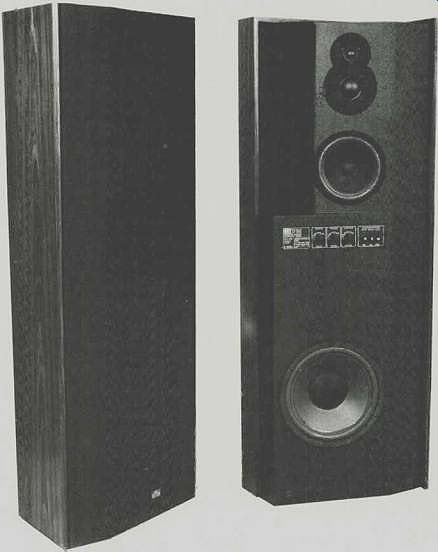
Manufacturer's Specifications:
System Type: Four way, pneumatic suspension.
Drivers: 12.6-in. (320-mm) cone woofer; 7.9-in. (200-mm) cone mid bass; 2-in. (51-mm) dome mid-high, and 1-in. (26-mm) dome tweeter.
Crossover Frequencies: 500, 2000, and 5000 Hz.
Nominal Impedance: 6 ohms.
Sensitivity: 89 dB SPL at one meter for 2.83 V pink noise.
Power Handling: 250 watts, 8 ohms.
Dimensions: 55.1 in. (1400 mm) H x 18.9 in. (480 mm) W x 11.4 in.
(290 mm) D. Weight: 105.6 lbs. (48 kg). Price: $3,000.00 per pair.
Company Address: 692 Central Ave., Cedarhurst, N.Y. 11516, USA.
Electroacoustic Systems Building, a manufacturing company just outside Rome, has been building quality loudspeakers under the ESB label for almost 12 years. Only recently introduced into the United States, the flagship of their fleet of high-quality loudspeakers has been the Series 7 line. The second model in this line, the ESB 7/06, is specifically intended for the home environment.
Utilizing what ESB calls their "Distributed Spectrum" technology, the ESB 7/06 stands an imposing 140 cm in height and covers the audible range with a geometric configuration of a four-way system. These drivers are vertically aligned in order to maintain the same azimuth of radiation centers and to minimize destructive interference for off-axis listening positions. In addition, the drivers are mounted such that an off-axis listening position is intended to produce a change in the direct-sound frequency response which compensates for that change in position. If, for example, ore sits directly on the line of center between a stereo pair of ESB 7/06s, the responses from the left-channel and right-channel speaker are the same. If one then moves his listening position toward the right of center, so as to sit more nearly in front of the right speaker, the higher frequency direct response from this right speaker is actually reduced slightly, while the left channel high-frequency response is correspondingly increased. This, according to ESB, compensates for the fact that one is closer to the right-channel speaker, and, rather than perceive a stereo image shift with change in position, the listener perceives the same stereo illusion over a wide range of positions. An interesting concept.
Bass response is handled by a 320-mm woofer operating in a closed system. A 200-mm mid-bass cone, a 51-mm mid-high dome, and a 26-mm dome cover the rest of the range between 25 Hz and 20 kHz. In the system tested, the top three drivers have individual equalizer switches behind the grille. Each has six switched positions, though the current version has continuously variable controls. On the system tested, the equalizers are labeled "Mid-Low," "Mid High," and "High-Range," with reference positions of "Norm," "Norm," and "Lab. Ref." respectively. Each of these three drivers has a separate fuse mounted on the front next to the equalizer switches; furthermore, each of these fuses has an indicator light to show if an overcurrent has occurred. A single 4-amp fuse is mounted adjacent to the speaker connector on the rear of the enclosure and protects the woofer. Obviously, ESB is accustomed to purchasers who play music "pedal to the floor." The system is rated at 6 ohms impedance and is claimed to handle amplifiers of up to 250 watts per channel into 8 ohms.
The construction is sturdy, the cabinet is beautiful, and the system has a business-like appearance, but there are two precautions I must pass along. The shipping container, as we received it, is marginal in its structural rigidity, and the loudspeaker, particularly its grille, can be damaged unless care is taken to remove it properly from the container. The system is far too heavy (48 kg) to be lifted from the box, unless, of course, one is an Olympic weight lifter. It's better to first place the box flat on the floor with its back downward; open the long side to expose the ESB, and then carefully remove the rather fragile wood-frame grille assembly; finally, tip the box on its side and slide the ESB out of the container. Do not under any circumstance attempt to remove the speaker from an upright container position.
The second comment I feel obligated to make is that the center of mass is too high, and the bottom support pedestal is too small, to allow safe placement on a carpeted floor. Not only will this tall enclosure emulate another famous Italian structure to the north of Rome, but it will take only a modest nudge from a toddler or pet to cause this unit to topple. This speaker must be placed on a solid flat surface in a location well away from inquisitive toddler hands or away from places where it may be bumped accidentally.
Measurements
The ESB 7/06 provides six positions of control in each of its three equalization ranges. As with most speaker systems, the actual impedance presented to a power amplifier will depend upon the particular equalization setting selected by the user.
Figure 1 is the measured impedance for two particular equalizer combinations. The curve marked " Normal" is taken for all controls set to the reference position. The curve marked "0 dB" is taken for all controls in the maximum position and corresponds to the lowest net impedance presented to a power amplifier. Figure 2 is the complex impedance plot for the " Normal" position of equalizer settings.
Although rated by ESB as a 6-ohm system, I recommend that it be considered a 4-ohm system from the standpoint of amplifier and cable hookup. Following a principal resonance of 36 Hz, the impedance quickly drops to slightly above 4 ohms at 100 Hz, then rises for frequencies above--this value. Although the level of impedance again drops to moderate values at higher frequencies, the associated capacitive phase angle remains less than 30° throughout the usable audio frequency range. This means that the ESB presents a load which most power amplifiers can handle near their maximum voltage drive levels without the difficulties that might otherwise exist were they to drive a highly reactive load.
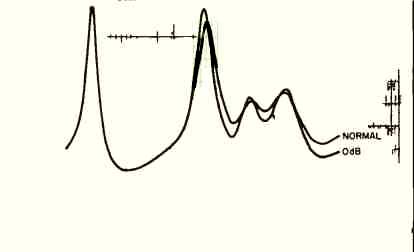
Fig. 1-Impedance for two settings of the equalizers (see text).
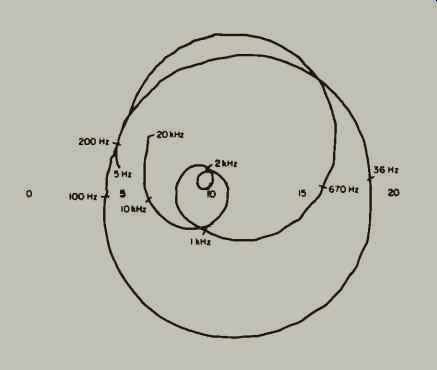
Fig. 2-Complex impedance for the " Normal" settings of the equalizer
switches.
The one-meter frequency response is plotted in Figs. 3 and 4. Because of the substantial spacing between drivers in this system, and of the intent that the listening axis be essentially aligned with the upper cluster of drivers, the measurement was taken at greater than one meter distance along the listening axis recommended by ESB and corrected for spherical loss to give the proper one-meter SPL. The listening test had demonstrated the desirability of removing the grille assembly for smoother sound and, accordingly, Figs. 3 and 4 were taken with the grille removed.
Bass response extends down to around 38 Hz and then falls uniformly below that frequency, approaching an asymptotic frequency slope of 12 dB per octave. There is a modest bass rise at 80 Hz and shallow dip at 400 Hz, with a rising characteristic of 4 dB per decade that begins at 800 Hz and extends to the high-frequency cutoff of 18 kHz. The dip in response at 700 Hz is due to phase cancellation between the low-frequency and midrange drivers. This is accompanied by a 180° rapid change of phase at 700 Hz.
The phase measurement of Fig. 4 is taken in two parts in order to correct for the arrival time difference between midrange and tweeter elements. Tweeter measurements are corrected for an equivalent time delay of 3.0093 mS for a microphone placed one meter in front of the loudspeaker.
The midrange phase measurements are corrected for an equivalent time delay of 3.5322 mS. The difference of 0.5229 mS corresponds to a time delay offset between the tweeter and midrange driver for this measurement position. Several of the newer computer audio measurement methods are discussed elsewhere in this issue. I thought it might be of interest to readers of Audio to see the application of one of these computer devices for a slightly more detailed analysis of the ESB 7/06 loudspeaker. Figures 5 and 6 show changes in frequency response caused by altering the equalizer controls from the " Normal" position. I first measured the one-meter SPL with the Tecron System 10 TDS computer. I put all controls in their indicated " Normal" positions and left the grille in place for this one-meter measurement. Because I wanted to see what changed when the equalizer settings are altered, I put this first frequency response in memory. Then I removed the grille, increased the mid-bass presence control to its "0" position, and replaced the grille. Then I duplicated the frequency measurement and asked the computer to print only that part of the frequency response that changed. The result is the plot of Fig. 5. In this plot, the difference in amplitude is plotted vertically (3 dB/division, 24 dB full scale), and the frequency is plotted horizontally, though it is on a linear scale ( d.c. to 20 kHz). In the unlikely event there were no amplitude changes at all between the two settings of the equalizer control, we would then see only a dotted horizontal line halfway up the amplitude scale.
It can be seen that changing the mid-bass control from "Normal" to "0," while keeping the "Mid-High Presence" and "High Range Clearness" controls (as ESB labels them) at "Normal," causes an increase in response at 700 Hz by 2 dB, with virtually all of its effective range below 2.6 kHz.
What is technically significant about this measurement is the fact that the actual free-field response, measured by the microphone, and stored in memory, is fluctuating at least ±6 dB over this range and would look like an Alpine mountain range on this scale. What we see in Fig. 5 is how the sound will change when we change the equalizer. Incidentally, measurement repeatability in this case was checked at slightly better than ± 0.15 dB, including background noise and grille replacement.
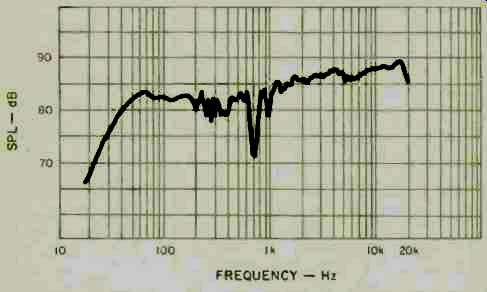
Fig. 3--One-meter on-axis sound pressure level for a constant voltage drive
corresponding to 1 average watt into 4 ohms.
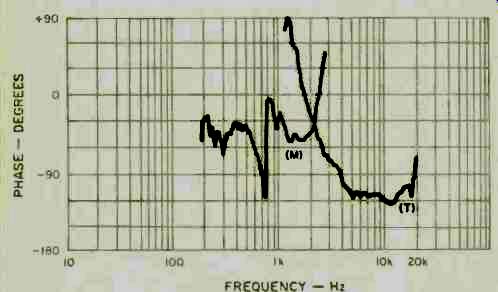
Fig. 4--One-meter on-axis anechoic phase response corrected for midrange
time delay of 3.5322 mS and tweeter time delay (T) of 3.0093 mS.
Figure 6 is the change in response from the " Normal" to "0" positions of the "High Range Clearness" equalizer control. The scales, 3 dB per vertical division, and from d.c. to 20 kHz full scale, are the same as for Fig. 5.
During the earlier listening test, I had felt that the grille assembly detracted from the quality of reproduction which could be obtained from the ESB 7/06. Figure 7 is a Tecron System 10 measurement which verifies this subjective feeling. This time the grille was removed and the one-meter anechoic frequency response measured by TDS. Then the grille was replaced and the difference which this causes in the sound was plotted. The grille frame assembly is a rather complicated unit on which to support fabric; sound scatters not only from the interstices of the fabric but also from the supporting structure. Figure 7 is the change which the grille assembly causes on the first 10 mS of sound; the deviations from perfection are of the order of +1.2,-3 dB. Note that the fabric is essentially transparent to sound, even at 20 kHz, causing less than 1 dB loss on average; the culprit is reverberation, not loss. I recommend removing the grille assembly from the ESB 7/06 for more accurate sound.
The three-meter room response is shown in Fig. 8. The left-channel speaker is properly identified by ESB and definitely has a more uniform frequency response when placed in a left-channel listening position. This measurement displays the frequency spectrum of the first 13 mS of sound which reaches a listening position that is three meters away and one meter above a carpeted floor. The wide vertical dispersion pattern of the higher frequency drivers leads to a modest amount of upper register raggedness due to sound which reflects off the ceiling of the measurement room which has a 2.5 meter floor-to-ceiling height. As is our custom, the data of these measurements is displaced 10 dB on the scale of Fig. 13 to allow ease of interpretation.
On average, the room response of the ESB is very uniform.
Measured horizontal and vertical polar-energy dispersion patterns are shown in Figs. 9 and 10, respectively. These were made on the left-channel speaker with the grille in place. Sound is launched slightly upward and toward the traditional listening position for stereo reproduction. Horizontal dispersion is smooth, with no apparent beaming. Vertical dispersion is somewhat more directed because of the vertically stacked configuration of loudspeaker elements. This loudspeaker should be placed well away from large objects, either to the side or above, in order to preserve the uniformity of early sound.
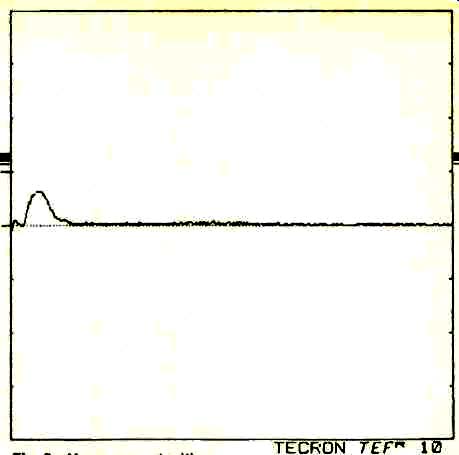
Fig. 5--Measurement with Crown TEF System 10 computer system showing "differenced
data" from "Norm" to "0 dB" equalizer settings of "Mid-Low
Presence" control.
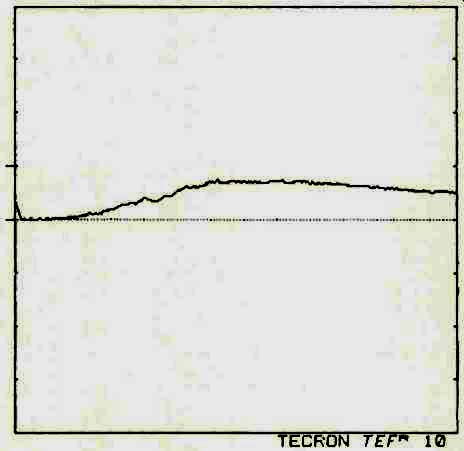
Fig. 6--Measurement as in Fig. 5 but "High-Range Clearness" control
from "Norm" to "0 dB."
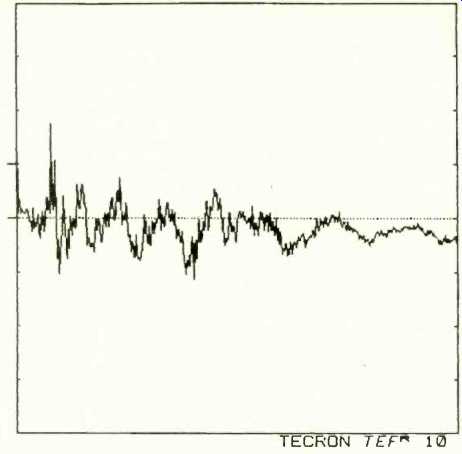
Fig. 7--Measurement as in Fig. 5 but showing effects of grille on first
10 mS of sound.
Harmonic distortion for the tones of E1, A2, and A4 is shown in Fig. 11. With the exception of the second harmonic of E1, this loudspeaker has very low harmonic distortion over most of the usable range up to average powers of 100 watts. It is also significant that the distortion rises uniformly with increase in power level, which is subjectively more acceptable than distortion products that, for example, decrease with increasing power and, hence, have few counterparts in natural sound.
During the listening test I sensed an upper midrange harshness that "came on" at higher sound levels and which seemed concentrated in a relatively narrow pitch range. I went looking for this later during the measurement session and found it at 1.1 kHz. Whereas all tones within several octaves of this frequency had less than a quarter percent total distortion at 10 watts, the 1.1-kHz tone exhibited 4.08% second-harmonic distortion and 0.3% third-harmonic distortion. At 2.5 watts, the 1.1-kHz tone exhibited 2.6% second and 0.27% third. Much like a "wolfnote" in a stringed instrument, this maverick discord was distinctly audible only at robust listening levels. Both loudspeakers had, to me, the same subjective problem, but, in fairness, I must point out that I only used one speaker for this distortion measurement.
A brief word on this particular measurement is also in order, since it used another measurement device. I used a Bruel & Kjaer Model 2033 FFT Analyzer to find this wolfnote. With its large digital memory and nearly 80 dB of dynamic range, this particular FFT made the job duck soup. Exciting the speaker with a short duration tone burst, I digitally captured the signal from the measuring microphone, then stepped through the "time bins" with the FFT analysis portion of the instrument. This reduces the spectral smear which might otherwise be caused by analyzing tone fragments containing the turn-on and turn-off transients. It also allows inspection of the change of distortion components as a function of time duration following the tone's sudden application to the speaker at a power level which, if maintained at steady state, would fry the voice-coil. This is a valid test because, after all, this is how we listen to the speaker.
The intermodulation distortion induced on a tone of A4 by a superimposed tone of E1 is plotted in Fig. 12. As with harmonic distortion, the IM distortion is quite low over most of the usable dynamic range of this speaker. IM distortion at levels below 50 average watts is principally due to phase modulation of A4 caused by E1. An additional property that comes into play at very high sound levels is a small displacement of the average position of the sound source away from the listening position. This implies that the arrival time of higher pitched instruments is very slightly retarded during substantial bass passages. The actual retardation is quite small, amounting to a phase shift of the order of 5° on 440 Hz at 100 average watts. This is probably not audible.
Acoustic transfer with gain is within 0.1 dB of perfect for the test tones of A2, Middle C, and A4 up to 30 average watts and for single bursts of one second duration or less. The ESB exhibits a progressive gain-transfer compression for longer duration tones above 10 average watts. The result is a hysteretic property in acoustic gain transfer such that loud sustained passages will cause quiet passages which follow them to be reproduced at slightly lower level than they would have been if the loud passage had not been present. This effect persists for a brief time before subsequent quiet passages come up to their proper level. At 40 average watts, a 50% duty cycle consisting of one second of loud followed by one second of soft sound, with this sequence repeated twice, produces a 1-dB compression on Middle C; a duty cycle of one second of loud followed by three seconds of soft, repeated twice, has less than 0.05-dB compression. I did not sense this effect during the earlier listening test, although it does show prominently in the measurements.
The same tones of A2, Middle C, and A4 show less than a 0.1-dB change in level when a sudden broadband noise of 20 dB higher average power is suddenly superimposed.
Taken together, these two distortion measurements imply that the ESB 7/06 will reproduce orchestral dynamics very well, with no change in stereo lateralization or depth during crescendo, but heavy sustained passages may cause temporary lateral shift for instruments whose stereo position is near the far left or right.
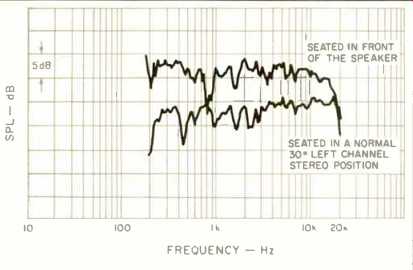
Fig. 8-Three-meter room test for left-channel unit, with plots separated
10 dB for clarity.
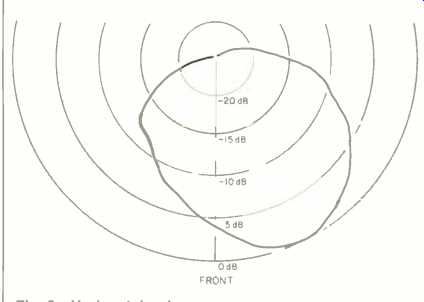
Fig. 9-Horizontal polar energy response for the left-channel unit.
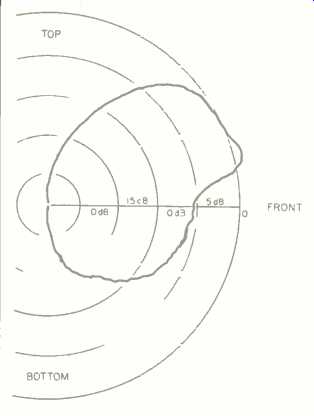
Fig. 10-Vertical polar energy response for the left-channel unit.
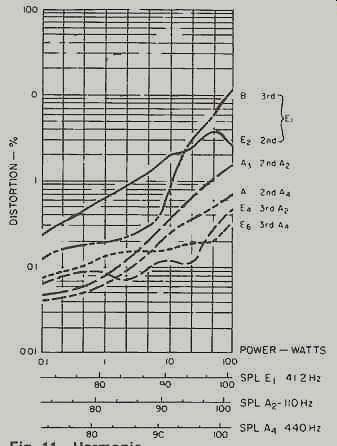
Fig. 11-Harmonic distortion for the tones E1 or 41.2 Hz, A2 or 110 Hz, and
A4 or 440 Hz.
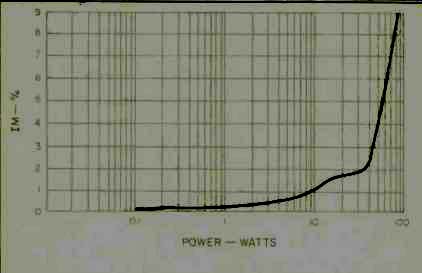
Fig. 12-IM distortion on A4 or 440 Hz caused by E1 or 41.2 Hz when both are
mixed in a one-to-one ratio.
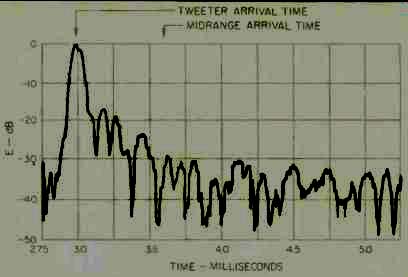
Fig. 13-Curve of energy vs. time taken at one meter on axis.
The one-meter on-axis energy-time cure (ETC) for the ESB 7/06 is shown in Fig. 13. This measurement was made with the grille in place. The first sound, which occurs at 3.0 mS, contains the frequencies between 2 and 20 kHz. The frequencies below 2 kHz arrive at around 3.5 mS, but due to the combined effect of, one, containing only 10% of the full 20-kHz energy spectrum, and, two, the upper and lower frequency roll-off of the Hamming weight used to get this ETC, their arrival is obscured by the reverberation pattern caused by the grille assembly. Signals at about 3.2, 3.25, 3.4, and 3.6 mS are principally due to reflections and scatter from the grille fabric and the frame which holds that cloth. This measurement also implies that more accurate transient reproduction will result if the grille assembly is removed. Even with the acoustic problems caused by the grille, the ESB 7/06 has a very good transient response.
Use and Listening Tests
I cannot urge too strongly that, in my opinion, the ESB 7/06 is structurally top-heavy and should not be placed directly on a deep pile carpet. Simple experience showed that the ESB could topple if placed directly on the carpeted floor of my listening room. This condition was eliminated by placing the speakers on 30-cm-square wood base plates which I cut from conventional wood shelf boards. These provided a stable base without acoustic interaction, al though they did increase the furniture-moving aspects of trying the ESBs in various room locations.
These loudspeakers must not be placed in or near a corner. Bass response, which is reasonably balanced if these speakers are placed flat against a wall, can become excessively dominant if corner positioning is chosen. When the ESBs are placed against a wall, there still is a mild bass dominance, to my ears. Lower registers are well reproduced, with no apparent need for a sub-bass augmentation on even the lowest notes.
It was apparent early in the listening test that the grille assembly was causing a small problem in the sound. When seated in a position symmetrically located with respect to the left and right channels, the sound was not substantially altered by removal of the grille. But walking through the meter on axis, listening position and noting the difference with and without the grille in place, it became apparent that the grille changed the stereo illusion and slightly modified instrumental timbre. All subsequent listening was done with the grille removed.
Piano and human voice, the two most difficult sources, are accurately reproduced, with no change in sound balance over the important frequency range which covers the octave below Middle C through the octave above Middle C. Spectral response in the frequencies above this range suffer from small irregularities, but, on the whole, these frequencies are reproduced well. I tried various combinations of the three equalizer settings, and I believe that the best overall spectral balance is obtained with the reference positions identified by ESB as "Normal." This system can handle very high sound pressure levels with ease, but I sensed a tendency for certain program material to get "blasty" at high levels; female vocal and horn seemed to be the most bothered by this problem, in my opinion. Subsequent technical measurements revealed this to be the equivalent of a "wolftone" about two octaves above Middle C. (This is discussed under "Measurements.")
Stereo imaging is excellent, and the stereo illusion remains intact at all reproduction levels-soft to extremely loud. I cannot say whether ESB's "Distributed Spectrum" concept was the cause, but the stereo image is solid and not materially influenced by where one sits.
I was favorably impressed by the sound of the system when I first heard it at the January 1983 CES, and remained impressed when--given the opportunity to run it through its paces. If one places it on a firm platform, so it will not readily topple, and throws the grille away, the sound is excellent.
-Richard C. Heyser
(adapted from Audio magazine, Nov. 1983)
Also see:
Fuselier 3.8D Loudspeaker (June 1989)
Fisher ST-425 Speaker System (Jan. 1975)
Boston Acoustics A40 Speaker (July 1983)
= = = =